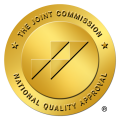Treating Depression at your Addiction Treatment Facility
Depression is a challenge that much of the population faces. However, identifying when it is serious and needs medical assistance is based on the symptoms and the results of the emotional imbalances.
Article Contents
What is Depression?
According to the American Psychiatry Association, “Depression (major depressive disorder) is a common and serious medical illness that negatively affects how you feel, the way you think and how you act.”1 Depression causes different feelings, such as sadness and loss of interest. Depression affects individuals at work, at home, and in areas of recent interest. However, it is a treatable condition.
Statistics on Depression
The American Psychiatry Association states that:1
- Depression affects approximately one in every 15 adults in any given year, meaning a total of 6.7%.
- One in every six people; (16.6%), will experience depression in their life.
- Depression is more likely to affect women than men.
Types of Depression
Although depression is generally associated with sadness, there are different types of depression. The symptoms and signs vary for each.
Bipolar Disorder
Bipolar disorder was previously referred to as manic depression. It is a mental health disorder that causes extreme mood swings, including emotional highs called mania and extreme lows which are depression.2
Atypical Depression
Atypical depression is experiencing a depressed mood but feeling more positive in response to positive situations.
High Functioning Depression
High-functioning depression, also known as persistent depressive disorder, is a chronic disorder where the symptoms of depression are experienced but are not evident to the world.
Psychotic Depression
Psychotic depression is a subtype of major depression. Psychotic depression occurs with a severe depressive illness that includes a form of psychosis.3
Situational Depression
Situational depression is a short-term depression related to stress. Situational depression develops if someone experiences a traumatic event or series of traumatic events.4
Signs and Symptoms of Depression

The symptoms of depression can vary from mild to severe. Typical signs of depression include:
- Feeling sad or depressed moods
- Loss of interest in activities once enjoyed
- Changes in appetite such as weight loss or weight gain
- Trouble sleeping or oversleeping
- Loss of energy or increased fatigue
- Increase in purposeless physical activity such as fidgeting, pacing, or handwringing
- Increase in slowed movements or speech
- Feelings of worthlessness or guilt
- Difficulty in thinking, concentrating, or making decisions
- Thoughts of death or suicide
How is Depression Diagnosed?
Depression can be diagnosed in four major ways.5
- Physical exam: Because depression may be linked to physical health issues, individuals may go through a physical exam.
- Lab tests: Doctors or medical professionals may conduct a complete blood count or test the thyroid to ensure it is functioning.
- Psychiatric evaluation: Individuals may be asked about their symptoms, thoughts, feelings, and behavior patterns.
- DSM-5: Health professionals use the health criteria listed in the Diagnostic and Statistical Manual of Mental Disorders (DSM-5).
- Beck Depression Inventory: The Beck Depression Inventory (BDI) is a self-report rating inventory. It has 21 items and measures the characteristics and symptoms that define depression.6
- ICD-10: The ICD-10 is the 10th revision by the WHO of the International Statistical Classification of Diseases and Related Health Problems
The Connection Between Depression and Addiction
Depression and addiction affect individuals due to a variety of factors. Depression puts individuals at risk for living and pursuing inconsistent lifestyles, such that leads to developing different addictions.
Major Depressive Disorder and Substance Use Disorder
A recent study has revealed that close to one-third of patients with major depressive disorder share a substance misuse disorder. The combination of both disorders results in a greater risk of suicide and increased social and personal impairment. This factor includes additional psychiatric issues.7
Depression Leading to Drugs
The US National Library of Medicine states, “Mood disorders, including depression and bipolar disorders, are the most common psychiatric comorbidities among patients with substance use disorders. Treating patients’ co-occurring mood disorders may reduce their substance craving and taking and enhance their overall outcomes.”8
The DAD Effect
The DAD effect describes when someone faces Depression, then Addiction, and finally denial.9
Depression, Addiction, and Denial is a Growing Problem
Experts agree that the Depression, Addiction, and Denial Effect is a growing problem. One of the major causes of this effect is due to individuals avoiding their emotions. Embracing our emotions is helpful, for those who know how to process them and identify the root. However, not everyone can deal with negative emotions, which may lead to addiction.
DAD Effect and High Functioning Depression
Depression does not look the same for everyone, particularly considering the various types of depression. Some individuals challenged by depression have great capability of completing tasks and working to get the job done. These individuals are considered high functioning depression victims when they are experiencing depressive symptoms yet keeping busy. Due to these factors, it is common to find individuals who are high functioning that also suffer from the DAD effects.
Treating a Dual Diagnosis of Depression and Addiction
Therapies
- CBT: Cognitive Behavioral Therapy is a method in psychological treatment that uses the function of the cognitive brain to rewire the connections between the individual’s behaviors and thoughts. CBT therapy is a common form of treating depression.
- DBT: Dialectical Behavior Therapy is a therapy that targets thoughts and behaviors while simultaneously incorporating the emotional regulation and mindfulness strategies a patient requires.
- EMDR: Eye Movement Desensitization and Reprocessing, or EMDR, is a form of treatment that alleviates the patient’s processing of a traumatic event.
Detox
A dual diagnosis detox plan or program can target the body’s need for substances to function. During a detoxing process, patients are monitored by a doctor or medical professional due to the opportunity for severe symptoms to rise during the detoxing process.
Inpatient
Through inpatient programs, individuals with substance use disorders can check into a monitored and clinically supported facility for addiction recovery programs. These residential facilities offer 24-hour medical support, with trained staff.
Outpatient
Through an outpatient program, dual diagnosis patients are equally supported, though outside of a facility, for addiction recovery. They are also monitored by a medical professional.
Resources
https://www.psychiatry.org/patients-families/depression/what-is-depression
https://www.mayoclinic.org/diseases-conditions/bipolar-disorder/symptoms-causes/syc-20355955
https://www.webmd.com/depression/guide/psychotic-depression
https://www.healthline.com/health/depression/situational-depression
https://www.mayoclinic.org/diseases-conditions/depression/diagnosis-treatment/drc-20356013
https://www.ncbi.nlm.nih.gov/pmc/articles/PMC2851027/
https://www.psycom.net/depression-addiction-denial
https://www.verywellmind.com/dsm-5-criteria-for-substance-use-disorders-21926




